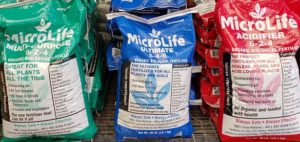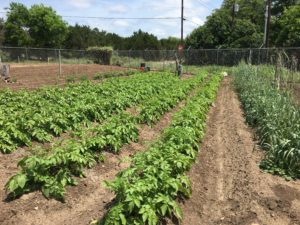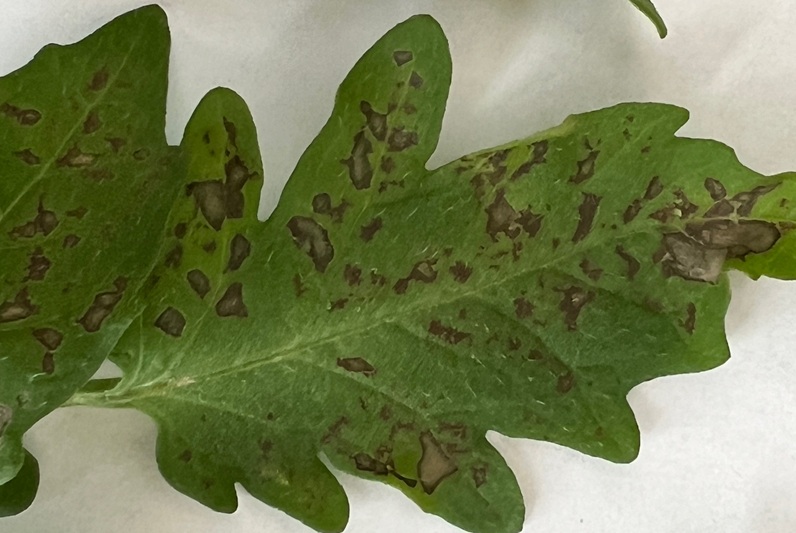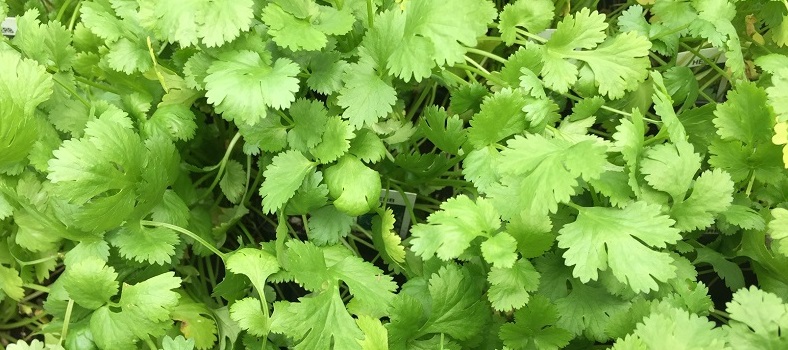The old-timers always said to get your potatoes in the ground by Washington’s Birthday. In Central Texas that is about 4 weeks before the last freeze.
Plan ahead by getting your seed potatoes about 5-7 days before planting. You will want to cut them into pieces with each containing an “eye”, and put them in a paper bag with some HiYield Dusting Sulfur to help prevent disease problems. Shake the pieces around in the bag until they are coated with sulfur, then lay them out on some newspaper to “cure” at about 65 degrees for 2-3 days. At planting time, the seed pieces will be slightly shriveled, have a well-healed cut surface and a slightly enlarged eye.
Potatoes need adequate fertilization early in the growth period. Side dressing and/or incorporating MicroLife 6-2-4 organic fertilizer or Fox Farm Marine Cuisine fertilizer at the time of planting will give the nutrients necessary for early growth. A second application should be made when the plants are 6”-8” tall.

When it is time to plant, the soil should be slightly moist. Plant on raised beds if your soil is heavy, or level ground if it is not. Rows should be about 30” apart. Smooth and level the planting area, then make planting furrows with your hoe about 3”-4” deep. Firm the pieces into the furrow about 12” apart, cover with soil and firm the soil over the seed pieces to ensure good soil to seed contact.

Within 3-4 weeks, the potato plants will emerge from the soil.
Only “indeterminate” varieties really need to have dirt added to the stems for increased tuber production. If you have planted an indeterminate variety, when they are about 6” tall, the plants must be “dirted”. Using a shovel or a hoe, mound up 3”-4” of soil on the base of the plant. As the top of the potato plant grows, the underground portion of the plant is sending out underground stems, called stolons. It is on these stolons that the potato tubers will form. For indeterminate varieties, maximum stolon initiation and tuber formation occurs at about 6”-8”, and is always above the depth at which seed potato was planted.
“Determinate” potato varieties such as Red LaSoda, Yukon Gold and White Kennebec produce tubers all at one level and do not require soil to be added or “dirted up”. However, adding 3″-4″ of compost, soil or mulch to the top of the soil after the plants have reached 6″ tall will prevent any surface tubers from being exposed to light. Light turns potatoes “green”. Green potatoes contain solanine which makes them bitter, and can be harmful if eaten in large quantities.
Adequate soil moisture is important for potato production. Dry soil will cause the potatoes to become knobby and misshapen. Watering to a depth of 6”-8”, and mulching to a depth of 2”-3” will help your potatoes grow vigorously and produce high yields.
Harvesting takes place when the tops begin to yellow and die, usually around the beginning of June in Central Texas. Cut the plants off at ground level and leave the potatoes in the ground to “cure” for 3-5 days. This will help the skin to set and toughen, increasing storage time.
Potatoes should be dug when the soil is moist. If the soil is too wet, the dirt will cling to the potato, if the soil is too dry, the clods could bruise it. To harvest, use a spading fork, digging in about 12” from the plant and lifting up, gently pulling the plant from the ground. There will be potatoes clinging to the plant and some remaining in the soil. Dig around a bit to find the stragglers. Most will be within 10”-12” of the main stem of the plant. Allow the potatoes to dry completely, then store in a cool, dry place with good air circulation.




